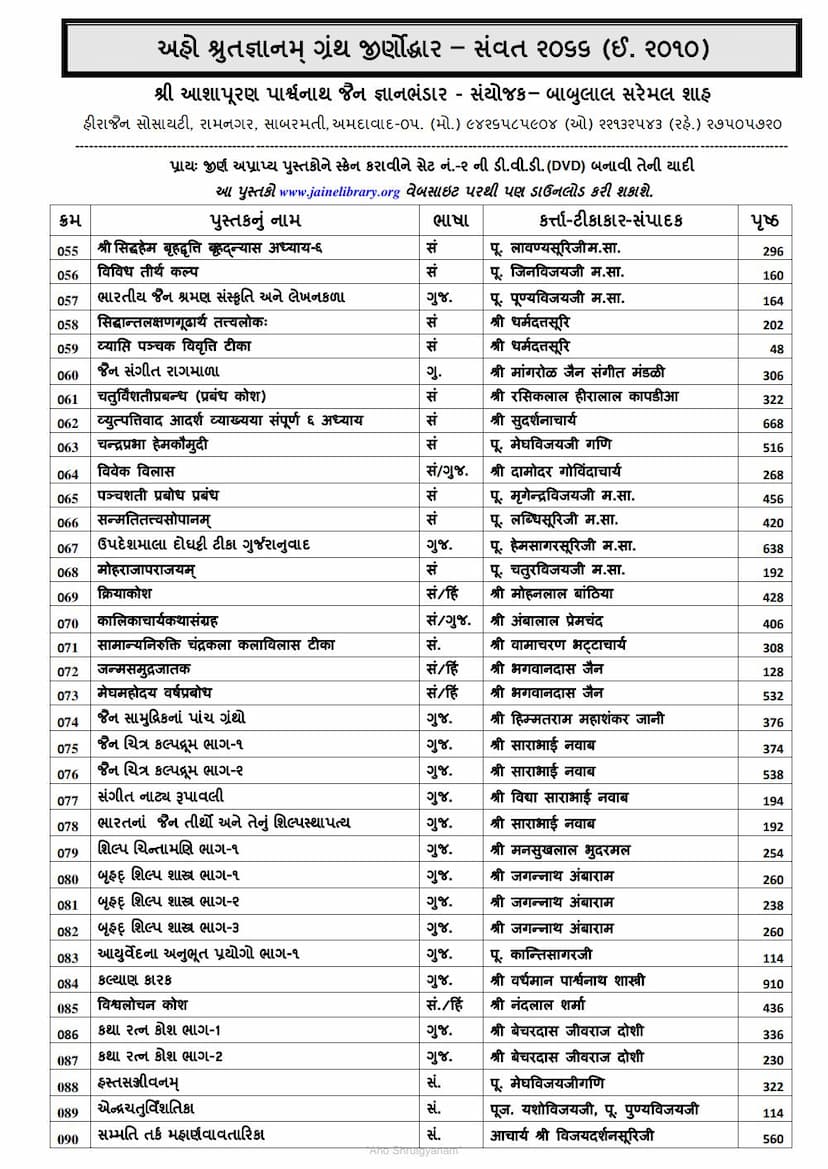Sammatitarka Maharnavatarika
Added to library: September 2, 2025

Summary
The Jain text "Sammatitarka Maharnavatarika" by Vijaydarshansuri, published by Jainmarg Prabhavaka Sabha, Madras, is a commentary on the Sammati Tarka, a foundational text of Jain logic and epistemology. The provided text is a catalog of Jain books, with "Sammatitarka Maharnavatarika" being one of them, listed on page 90 of the catalog. The subsequent pages contain the preface and detailed explanations, including a history of Jain philosophy and the life and works of Acharya Shiddhasena Divakara, the author of the original Sammati Tarka.
Key Aspects of the "Sammatitarka Maharnavatarika" (based on the provided text, primarily the preface and introductory sections):
-
Purpose: The text is a detailed commentary (Tika) and explanation of the original Sammati Tarka, aiming to make the complex philosophical and logical arguments of the original text accessible to a wider audience. It seeks to clarify the intricate concepts of Jain philosophy, particularly the theories of Syadvada (the doctrine of conditional predication) and Anekantavada (the doctrine of manifold aspects), which are central to Jainism.
-
Author of the Original Work: The commentary highlights the immense contribution of Acharya Siddhasena Divakara, the author of the original Sammati Tarka. The text provides a biographical sketch of his life, emphasizing his intellectual prowess, his ability to debate and refute opposing philosophical viewpoints, and his significant role in propagating Jain teachings. The preface mentions his mastery of various disciplines like poetry, grammar, logic, and religious discourse.
-
Core Jain Principles Explained:
- Anekantavada and Syadvada: The text extensively discusses Anekantavada, the Jain principle that reality has multiple aspects and cannot be grasped from a single viewpoint. It emphasizes how Jainism, through its doctrine of Syadvada, incorporates and syntheses various philosophical standpoints by considering them as partial truths from different perspectives.
- Rejection of Extremes: Jainism is presented as a path that avoids extreme views like eternalism (nityavada) and nihilism (shanikavada), instead advocating for a balanced approach that acknowledges both permanence (dravya) and change (paryaya).
- Logic and Epistemology: The commentary delves into the Jain epistemology, explaining the concepts of Naya (standpoints or perspectives) and Saptabhangi (the sevenfold conditional predication) as tools for understanding reality in its manifold aspects. It traces the lineage of these concepts within Jain scriptures and highlights how Siddhasena Divakara masterfully presented them in the Sammati Tarka.
-
Historical Context and Influence: The preface places Siddhasena Divakara historically, suggesting he lived around the 4th-5th century CE or potentially earlier, contemporary with Emperor Vikramaditya. It also mentions the profound influence of Siddhasena Divakara's work, noting that later Jain scholars and even scholars from other traditions referenced and built upon his arguments. The text traces the continuous tradition of philosophical inquiry and textual commentary within Jainism.
-
The Role of the Commentary: Vijaydarshansuri's "Sammatitarka Maharnavatarika" aims to elucidate the profound insights of Acharya Siddhasena Divakara. It is presented as a light for understanding the "ocean of Anekanta" (Anekantavada) embodied in the Sammati Tarka, making this profound philosophical work accessible to scholars and students alike. The commentary meticulously analyzes the verses and arguments, providing explanations and supporting references from other Jain scriptures.
-
Structure and Content (as indicated by the detailed index): The extensive index reveals that the commentary systematically breaks down the original Sammati Tarka verse by verse (or section by section). It covers a vast range of philosophical topics, including:
- Mangalacharan (auspicious invocation): Praise of Lord Mahavir, the Tirthankaras, and the author's guru.
- Analysis of Nayas: Detailed explanations of various logical standpoints (Nayas) and the sevenfold predication (Saptabhangi).
- Critique of Other Philosophies: Refutations of arguments from Vedic, Buddhist, Sankhya, Nyaya, Vaisheshika, and Vedanta schools, highlighting their limitations in grasping reality from an Anekantavada perspective.
- Nature of Reality: Discussions on substance (dravya), qualities (guna), and modifications (paryaya), and how they are understood within the Jain framework.
- Soul and Karma: Explanations of the soul, its bondage, liberation, and the role of karma.
- Epistemology: Analysis of knowledge (jnana) and perception (darshana), their types, and their validity.
- Metaphysics: Discussions on elements, space, time, and other ontological categories.
- Biographical Details: The preface and index offer significant details about Acharya Siddhasena Divakara's life, miraculous events associated with him, and his profound scholarship, establishing his stature as a pivotal figure in Jain intellectual history.
In essence, "Sammatitarka Maharnavatarika" is a scholarly and comprehensive work that serves to preserve, explain, and propagate the sophisticated logical and philosophical system of Jainism, primarily through the lens of Acharya Siddhasena Divakara's seminal contribution, the Sammati Tarka.